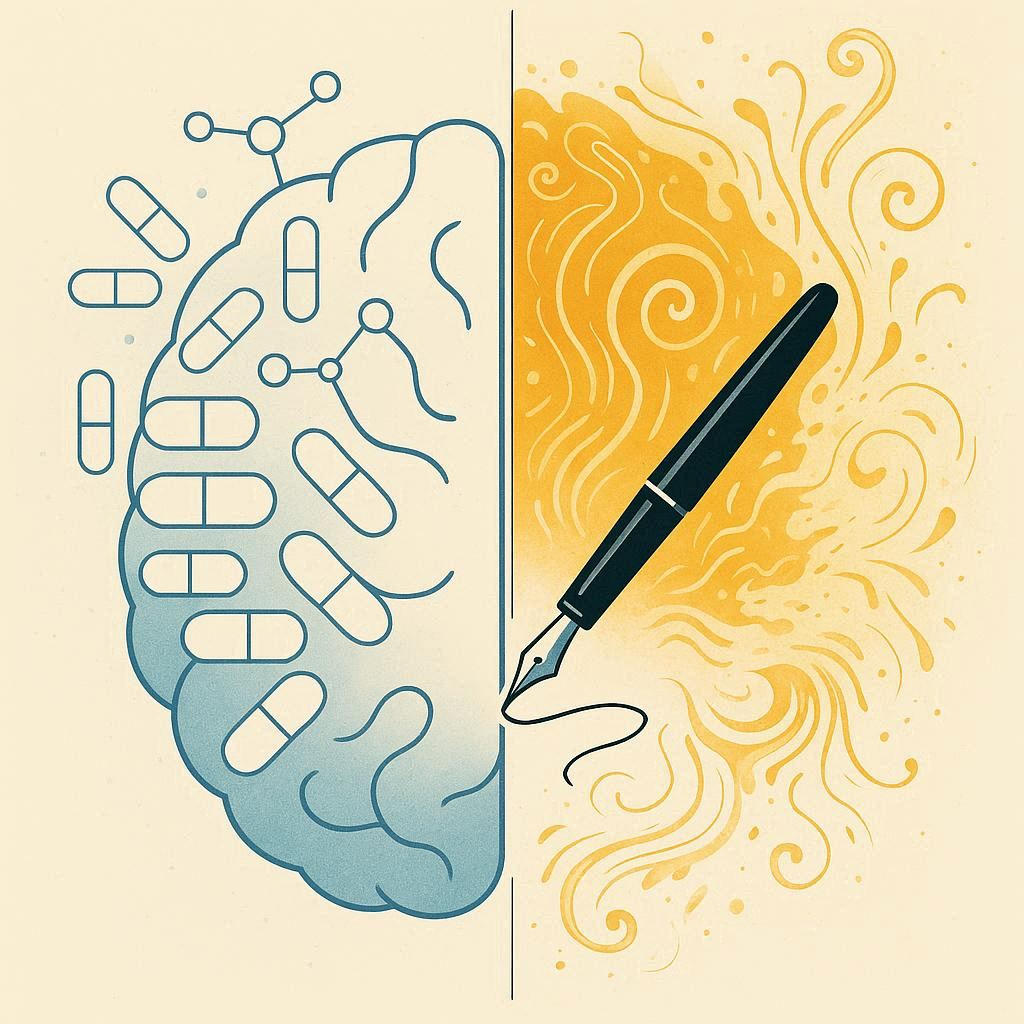Shortcuts to Trance States
On MDMA, Hypnosis, and the Limitations of Evidence
This weekend I watched a Swedish documentary about how Swedes use drugs. One scene stuck with me: Researchers describing with great enthusiasm how MDMA in controlled forms can help people with PTSD by placing them in trance states where deeper processing becomes possible. Medically interesting, clinically promising – and yet tragically limited in its view of what’s possible.
The tragedy lies not in the research itself, but in medical evidence culture’s one-sided focus on the measurable. MDMA receives research funding and clinical trials because the effect can be standardized, double-blind tested, and fit into our empiricist knowledge paradigm. It’s easier to study a pill than a relational process. But we already have tools that can create similar trance states – they just don’t fit the form that the evidence paradigm requires.
Milton Erickson and the Forgotten Art
Milton Hyland Erickson (1901-1980) was an American psychiatrist who specialized in medical hypnosis and family therapy. He was the founding president of the American Society for Clinical Hypnosis and became known for his view of the unconscious mind as creative and solution-generating – a view that stood in stark contrast to Freud’s view of the unconscious as filled with hostile and aggressive aspects.
Erickson’s work influenced brief therapy, strategic family therapy, family systems therapy, solution-focused brief therapy, and neuro-linguistic programming. His way of working with hypnosis and trance states inspired entire schools of therapy across continents. But his influence extended beyond just the therapy world.
One of his engaged followers was Aldous Huxley – the author of “Brave New World.” During World War II, Erickson worked with Margaret Mead and Gregory Bateson, experts in psychology and communication, and through their network Huxley came into contact with Erickson. Huxley was deeply interested in the boundaries of consciousness, both through psychedelic substances like mescaline and through hypnosis. He spent recurring time with Erickson exploring trance states through hypnotic induction.
What Huxley described – and what Erickson demonstrated clinically for decades – was that humans have natural abilities to reach altered states of consciousness. Where traditional hypnosis is authoritarian and direct, Erickson’s approach was permissive and indirect. He believed that the unconscious responds to opportunities, metaphors, and symbols, and that effective hypnotic suggestion should therefore be “artfully vague” – leaving room for the patient to fill in the gaps with their own unconscious understandings.
No medication required. But it requires time, relationship, context, and a therapist with deep skill. It’s difficult to placebo-control. It’s difficult to measure.
The Paradox of Evidence
Here the paradox emerges. Critics have pointed to the difficulty of defining and measuring Erickson’s methods according to traditional scientific standards. For Erickson, the shift from conscious to unconscious functioning was the essence of trance, but nowhere in his writings can one find an explicit definition of either “unconscious” or “conscious.”
But Erickson himself was a careful researcher who began his formal studies of hypnosis in Clark Hull’s laboratory at the University of Wisconsin. He continued with rigorous scientific explorations of the nature of hypnosis throughout his career and was the founding editor of the American Journal of Clinical Hypnosis. He was a prolific writer with a focus on case studies and experimental work.
Erickson’s type of science was deeply empirical but relational and contextual. It was built on detailed observations of individual cases. But this type of science doesn’t fit into today’s evidence hierarchy where randomized controlled trials reign supreme.
When the Pill Becomes the Shortcut
MDMA becomes the shortcut because it fits our scientific framework. It can be double-blind tested, the dose can be controlled, the result can be measured in ways that fit into meta-analyses.
Hypnosis remains marginalized, not because it lacks effect, but because it doesn’t fit the evidence hierarchy’s requirements for standardization. A hypnotic process is relationship-dependent, context-sensitive, and requires expertise that cannot be pill-packaged.
The Tragicomic
There’s something tragicomic about researchers and psychologists being so excited that MDMA can have an effect on PTSD patients – that a substance can place people in trance states where deeper processing becomes possible. As if this were a revolutionary discovery. As if we didn’t already know, since Erickson’s time and longer, that humans have this capacity within themselves.
A Swedish documentary probably couldn’t even portray it. How do you film the quiet, relational process where a skilled therapist through words, metaphors, and presence guides someone into altered states of consciousness? It doesn’t make for a dramatic scene, no clear before-and-after, nothing that fits the documentary’s format.
Well – it’s better to have a medicine with positive effect than only symptom relief. But when we celebrate the pill’s potential, perhaps we should also mourn what we’ve forgotten: that humans already carry within themselves the capacity for deep transformation. We just need someone who can guide us there.
It just requires more of us than swallowing a pill.
A reflection on Human & Machine after SVT’s documentary about how Swedes use drugs



